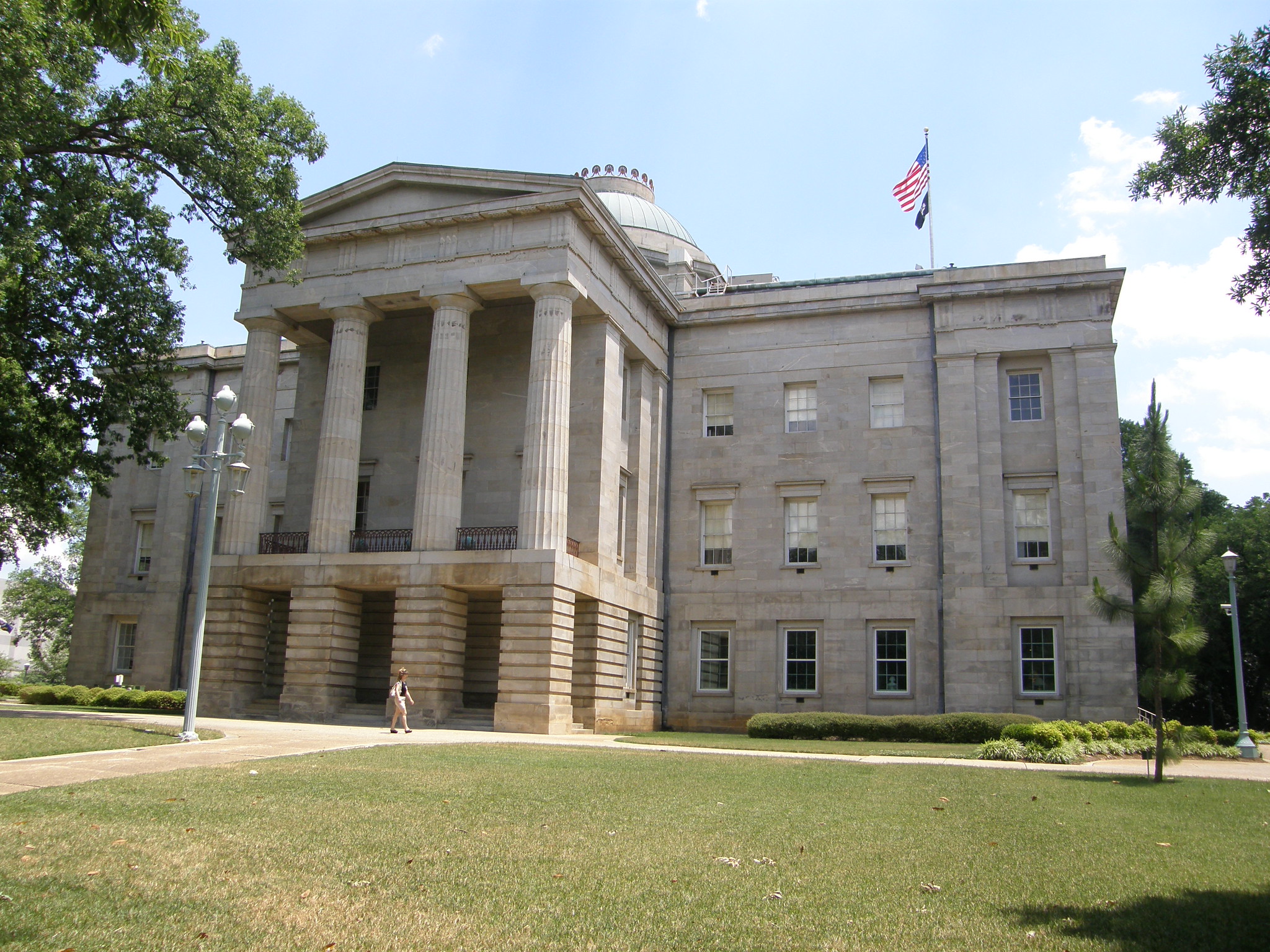Election Administration Challenges in North Carolina
What can North Carolina's March primary tell us about November?

Published by The Lawfare Institute
in Cooperation With

Lawfare is partnering with the Stanford-MIT Healthy Elections Project to produce a series on election integrity in the midst of the coronavirus crisis. The Healthy Elections Project aims to assist election officials and the public as the nation confronts the challenges that the coronavirus pandemic poses for election administration. Through student-driven research, tool development, and direct services to jurisdictions, the project focuses on confronting the logistical challenges faced by states as they make rapid transitions to mail balloting and the creation of safe polling places. Read other installments in the series here.
In North Carolina, voters have submitted ballots overwhelmingly in person—but as November draws near and the coronavirus pandemic continues to pose a critical countrywide public health threat, it’s evident the state will need to seriously reconsider its traditional means of election administration.
While in-person voting has proved challenging for many states navigating election season amid the pandemic, North Carolina was largely spared from these coronavirus-related concerns because its primary took place prior to the virus outbreak in the United States. North Carolina held its primary on March 3, this year’s Super Tuesday. On this date, North Carolina had not yet recorded any coronavirus cases and therefore the virus was unlikely to substantially change voter behavior—at least not to the extent seen in other states. The state’s residents were able to vote in person, both early and on Election Day, without the looming threat of contracting COVID-19, the respiratory disease caused by the novel coronavirus, at the polls.
But this will certainly not be the case in November. The pandemic shows no signs of letting up, and cases in North Carolina have only increased. While it’s difficult to predict exactly how widespread the virus will be in November, concern over contracting COVID-19 will be much more pronounced for the general election in North Carolina than it was for the state’s primary. And managing voting amid the pandemic will prove especially difficult in North Carolina. Results from the state’s primary election show that early voting sites are often crowded—perhaps even more crowded than polling stations on Election Day—and that absentee ballots are often returned incomplete or with errors, if they are returned at all.
With these concerns in mind, what can North Carolina’s primary tell us about November? How worried should we be?
Our analysis of voting patterns during North Carolina’s primary election identifies insightful trends to help address these questions, focusing on three areas: political participation rates, or how many people went to the polls; use of different modes of voting that might alleviate pressure and foot traffic on Election Day; and problems facing voters who mail in their ballots. These trends raise a few red flags, but also some points of optimism, for what lies ahead in North Carolina.
Our full report on turnout, absentee ballots, voter registration and crowding in polling places is available here.
A Word About Data
This post examines voter turnout, absentee balloting, voter registration, and polling place crowding in North Carolina based on original analysis of administrative data from the state. Most findings are based on data in the voter registration file, which is a database of all registered voters in the state; the voter history file, which is a database recording the voting record of each registered voter; and the absentee ballot file, which is a detailed accounting of all votes cast before Election Day. All of these files are available on the ftp site maintained by the North Carolina Board of Elections. Other data sources related to voter registration were used as well and are identified as necessary later in the post.
Who Voted?
The challenges facing North Carolina’s system in November will depend on how many people try to vote. If the 2020 primary elections were any indication, voter turnout for the general election is likely to be high. Turnout in North Carolina’s Democratic primary amounted to 1,340,256, which marked a significant increase from the 1,160,836 who voted in 2016. Republican turnout, by contrast, decreased from 1,154,516 in 2016 to 807,483 in 2020—but this change can likely be attributed to a lack of stiff competition for the Republican nomination of any prominent position on the ballot, including the presidency. That is, while Democratic presidential candidates ran a fairly tight race for the nomination, incumbent President Trump did not face much opposition for his party’s nomination.
Since 2016, there has also been an interesting shift in North Carolina’s unaffiliated voter participation. North Carolina employs a semi-open primary system, meaning that political party affiliates are permitted to vote only in their party’s primary, while unaffiliated voters may vote in any primary. In 2020, 65 percent of the 600,000 unaffiliated voters who cast ballots voted in the Democratic primary. This contrasts with the roughly 604,000 unaffiliated voters who cast ballots in 2016, 55 percent of whom voted in the Republican primary.
And demographics evidently played a role in the composition of voters who turned out for the two major-party primaries. The Democratic Party, which has historically appealed to young voters, attracted an even younger cohort. In 2016, 26 percent of the Democratic electorate were ages 44 and below. That figure grew to 32 percent in 2020, while the age distribution of the Republican electorate remained largely unchanged.
How People Voted
North Carolina has three modes of voting. Voters may vote early in-person, which North Carolina calls “one-stop absentee voting”; by absentee mail-in ballot; or in person on Election Day. How many people decide to vote on Election Day will have important implications for disease transmission in the weeks leading up to the election and on Election Day itself. The number of voters who decide to submit absentee ballots by mail will also have profound implications for the election.
North Carolina voters typically vote in person. In 2020, 63 percent of voters voted on Election Day, while 36 percent voted early. Almost half of voters above the age of 60 voted early. And only 1 percent of voters returned absentee ballots by mail.
Unsurprisingly, as the March 3 primary election approached, early voting turnout increased, despite an increase of seven additional early voting days. The surge in turnout close to Election Day still dwarfed what was experienced at the start of the early voting period. As in 2016, Republicans and Democrats showed similar levels of interest in early voting during the first few days of the early voting period. But unlike in 2016, Democratic interest in voting early skyrocketed as the 2020 primary approached, while interest among Republicans edged up only somewhat.
Without additional public opinion data, we cannot explain why this is the case—perhaps people decided late in the game to participate in the primaries, or perhaps Democrats were waiting to see which candidate they preferred in a crowded field. Because the choices available to voters in the general election will not fluctuate as much as they do during the primaries, this time trend observed in early voting may more closely resemble that of 2016 in November.
Some observers have pointed to early voting as a potential solution to the challenges posed by conducting a safe election amid a pandemic. The pattern described above has a few important implications for using early voting as a way of shifting voters away from crowded polling places. On the one hand, merely adding capacity in the first part of the early voting period may have little impact on social distancing in the election. On the other hand, if voters who are inclined to vote early could be persuaded to vote during the first 10 days of the early voting period, it would likely reduce crowding at early voting sites.
The potential for high foot traffic on specific early voting days is a critical drawback to this mode of voting as a proposed solution to social distancing concerns. Indeed, in analysis contained in the longer North Carolina report, we show that the density of voters was likely greater during the last couple of days of the early voting period than it was on Election Day itself. Previous analysis of early voting during the 2016 general election suggests that this was a trend four years ago as well.
Vote-by-Mail: What Could Go Wrong?
Early in-person voting is only one of the alternatives to busy in-person voting on Election Day. The other much-discussed solution is having voters mail in their ballots. While voters in many states already rely heavily on vote-by-mail, North Carolina voters are different. In the 2020 primary, only 1 percent of voters in North Carolina voted by mail.
Even though a small percentage of North Carolinians cast ballots by mail, North Carolina provides detailed data about every ballot request and its ultimate fate. Therefore, North Carolina’s small mail-ballot program provides a great opportunity to look closely at administrative issues that have arisen for voters.
For one, not all ballots that were mailed to voters were returned. Of the 41,428 mail-in ballots requested in the 2020 primary, 12,067 were never returned. A disproportionate number of these unreturned ballots had been requested just days before the election, most likely meaning that the voter didn’t have enough time to return the ballot in time to be counted. Some of these late-requesters showed up on Election Day and cast a ballot, but most did not.
Other ballots were returned but uncounted; nearly a tenth of all mail-in ballots were rejected. Some—2.6 percent of all returned ballots—arrived too late to be counted. An even larger proportion of ballots, 5.1 percent of all absentee ballots, lacked the necessary signature. All told, the percentage of mail-in ballots that were uncounted rose to 9.7 percent in the 2020 primary, up from 6.6 percent in 2016.
And different racial groups had substantially different success rates with vote-by-mail in March during North Carolina’s primaries. The following table shows the 2016 and 2020 mail-in ballot rejection rates by racial group, disaggregated for each of the two main party primaries. In a pattern that is becoming increasingly common, Black voters in both primaries saw their ballots rejected at substantially higher rates than white voters. The ballot rejection rates among Black voters were 13.1 percent among Democrats and 11.7 percent among Republicans in 2020. Among whites, ballot rejection rates were 8.8 percent for Democrats and 8.1 percent for Republicans. While overall rejection rates were lower in 2016, these racial differences appeared then, too.
Table 1: Mail-in Ballot Rejection Rates by Race
|
|
|
|||
|
|
|
|
|
|
|
|
|
|
|
|
|
|
|
|
|
|
|
|
|
|
|
|
|
|
|
|
|
|
|
|
|
|
|
|
|
|
|
|
|
|
Note: Rejection rates are calculated as the proportion of received mail-in ballots that were not accepted due to procedural errors on the part of the voter. We excluded spoiled ballots from this analysis.
There were sizable age differences in rejection rates as well. Rejection rates of ballots mailed in by young voters reached the double digits in 2020 (12.9 percent and 11.2 percent in Democratic and Republican primaries, respectively). The group with the second-highest ballot rejection rates? Older voters, with rejection rates of 8.6 percent and 8.3 percent in the Democratic and Republican primaries, respectively.
Looking Ahead: Lessons From North Carolina’s Primaries
When North Carolina held its primary this year, the voting landscape was entirely different than it is today. The coronavirus was in the news in early March but hadn’t yet hit the state. Since then, the virus has presented severe new concerns and unprecedented challenges for conducting a safe election. Thus, the parameters that guided North Carolina’s primary election back in March might seem to be almost immaterial under present circumstances.
Yet, the patterns seen in North Carolina’s March primary still provide hints of what voting in the state might look like in November. The exceedingly low level of absentee voting in the primary stands in stark contrast with what can be expected in the general election. Mounting evidence is already demonstrating that the use of mail balloting will greatly exceed the 1 percent seen in the 2020 primary. One recent public opinion study suggests that 43 percent of North Carolina voters intend to vote by mail in November.
It is one thing to reject 10 percent of absentee ballots when only 1 percent of ballots arrive by mail. Will 10 percent be rejected when 43 percent arrive by mail?
And if the results in the general election are contested, how will a review proceed in which all mail-in ballots—potentially 43 percent of all ballots cast—are closely scrutinized by canvassing boards? Canvassing boards are responsible for certifying the election results, and special attention is paid to absentee ballots. A system that was designed for a small volume of mail-in ballots could collapse under the larger volume that is to be expected amid the pandemic.
Any contestation over the rejection of absentee ballots will not be politically neutral. In this year’s primary, 8.5 percent of mail-in ballots cast by whites were rejected, compared to 13 percent for mailed ballots cast by Black voters. The greater mail-ballot rejection rate for Black voters lends explanation as to why voting rights activists have tended to argue that in-person voting is preferred among Black voters. Differential mail-in ballot rejection rates are also an important factor to consider for younger voters, who may vote at higher rates in this upcoming election, as well as older voters. And given the increased risk of COVID-19 complications for both Black and older voters, higher mail-in ballot rejection rates for these communities pose serious risks for equity in the upcoming election.
Data from North Carolina’s March primary provides a few significant warnings for the fast-approaching general election. For one, efforts to spread voters across polling stations through early voting measures may prove ineffective. A historically high volume of absentee ballots could also overwhelm the county elections boards. And differential mail-in ballot rejection rates among different demographic groups could politicize election administration or, worse, present unequal political outcomes in North Carolina




